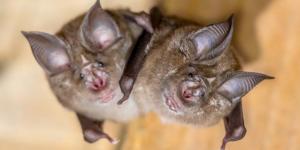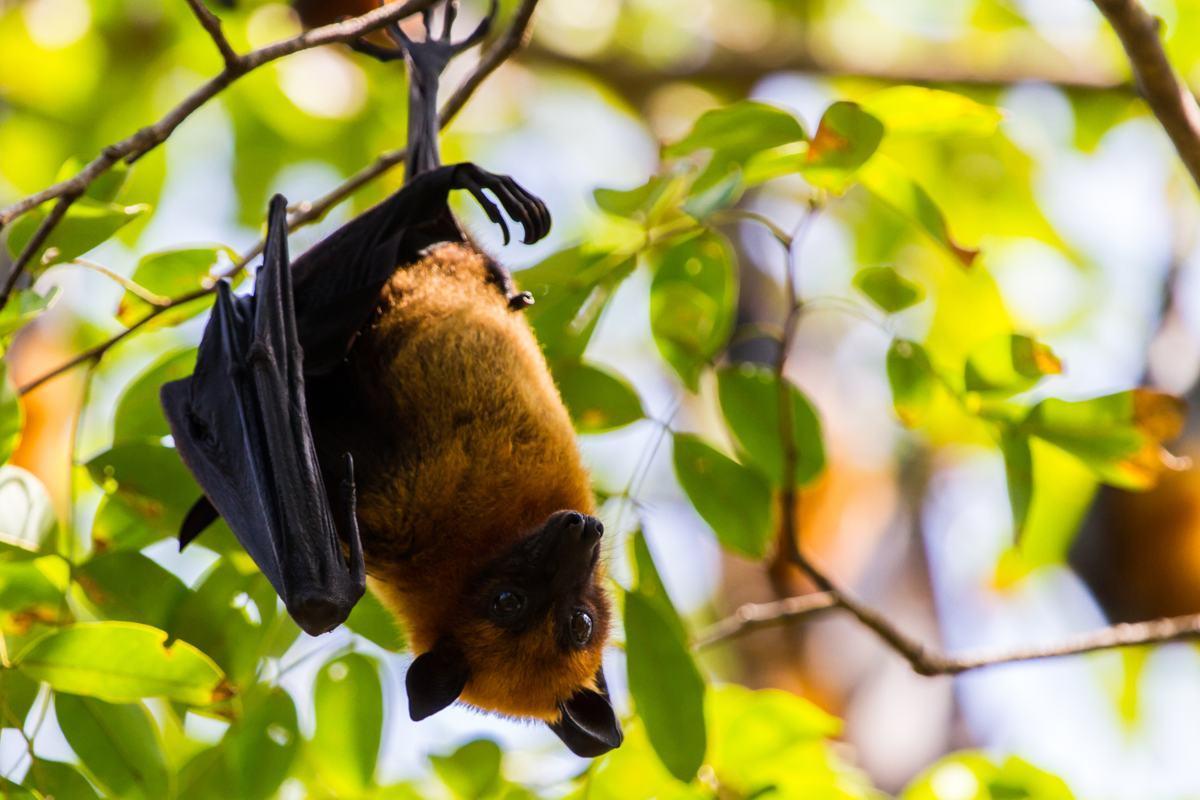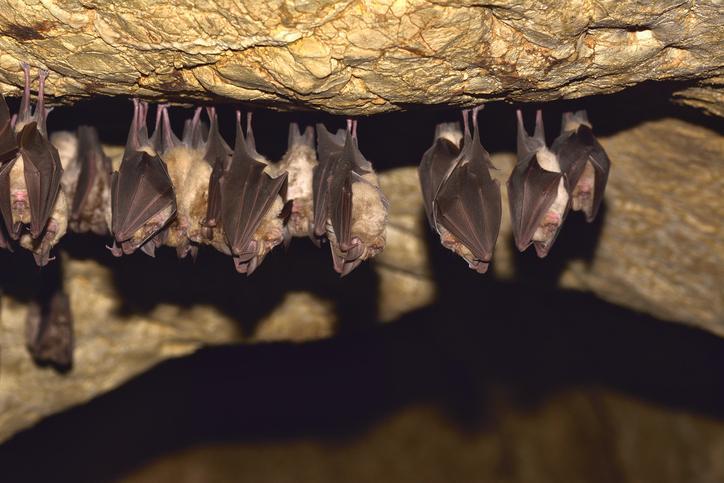How Do Bats Fly if They Are Blind?


Among the many misconceptions surrounding bats, one of the most persistent is the idea that they are blind. This widespread belief stems from their nocturnal habits and their remarkable ability to navigate and hunt using echolocation. However, the truth is that bats are far from sightless; in fact, their vision plays an important role in their lives, even if it has evolved differently from our own.
In this AnimalWised article, we will delve into the widespread misunderstanding that bats are blind, and shed light on how bats see using echolocation. We will also explore other intriguing aspects of bat vision.
Are bats blind?
No, bats are not blind. However, the common misconception that bats are blind is surprisingly widespread. This belief likely stems from their nocturnal habits, their erratic flight patterns and the use of sonar-like sounds reinforces the perception of blindness.
The truth is that bats have well-developed eyes that play an important role in their lives, especially in low-light conditions. While their eyes may not be as acute as human eyes, they are perfectly adapted for their nocturnal lifestyle.
In addition to their vision, bats also have a remarkable ability called echolocation. This involves emitting high-frequency sounds and interpreting the echoes that bounce off objects in their surroundings.
So, while bats do not use their sight as their primary means of navigation and hunting, their eyes are still an essential tool for them. They use their vision to orient themselves in their surroundings, identify stationary objects, and assess the distance to nearby objects. Their eyes also help them to refine their echolocation cues.
Mammals with wings, but not birds? The bat's classification might surprise you. Unmask their true nature in this other article.
Bats eyes vs human eyes
Despite the misconception that bats are blind, they possess remarkable eyes specifically adapted to their nocturnal lifestyle. While smaller than human eyes, they boast unique features that allow them to excel in the shadows.
Unlike our own retinas, which contain a mix of rod and cone cells, bat retinas are dominated by rod cells. These specialized photoreceptors excel at capturing even the faintest moonlight, making them highly sensitive to low-light conditions. This enables bats to navigate the darkness with impressive precision, even in the absence of bright light.
Some bat species possess an additional advantage: ultraviolet-sensitive cones. These miniature detectors can perceive invisible ultraviolet light, adding another layer of information to their visual perception. This can aid in navigation, prey detection, and even differentiating ripe fruit from unripe ones.
Bat lenses further enhance their light-gathering prowess by having an elliptical form effectively focuses incoming light onto the retina, squeezing every drop of illumination from the night sky.
While most bats lack the full spectrum of color vision like humans, some species possess hidden talents. Fruit bats, for example, have blue and green-sensitive cones, allowing them to discern subtle shades and pinpoint ripe fruit with greater accuracy.
Finally, depth perception, crucial for humans, takes on a different form for bats. Their eyes, positioned farther apart, offer less binocular overlap than ours. However, they employ echolocation, a sophisticated bio-sonar system that paints the world in ripples of sound, enabling them to navigate and hunt with remarkable precision even in complete darkness.
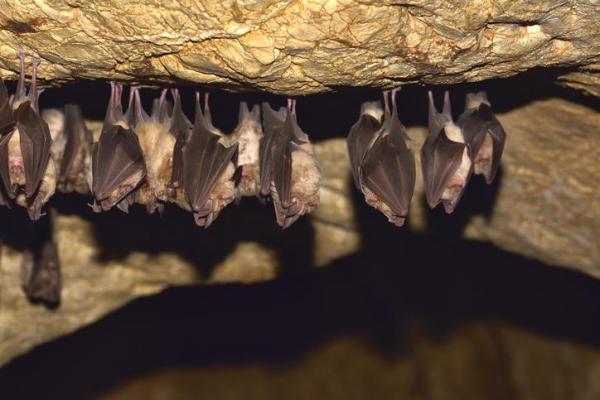
What is echolocation in a bat?
Echolocation is a remarkable biologicalsonar system that allows them to perceive their surroundings through sound waves, even in complete darkness.
Unlike human eyes that rely on light, bats emit high-frequency sound pulses through their mouths or noses. These sound waves act like tiny radar signals, bouncing off objects in the environment and returning to the bat's ears. By analyzing these returning echoes, bats can gather detailed information about their surroundings, including the size, shape, distance, and even texture of nearby objects.
This process happens at lightning speed. Specialized structures in the bat's inner ear capture and analyze the returning echoes with exceptional sensitivity. They act like miniature sound processing units, extracting critical information from the echoes and forming a detailed picture of the world around the bat.
Echolocation allows bats to perform feats unmatched by most other animals. They can navigate through complex cave systems, avoiding obstacles with incredible precision. Fruit bats use it to locate ripe fruit hidden within dense foliage, while insect-eaters track down their tiny prey with pinpoint accuracy, even in complete darkness.
The diversity of bat species reflects the versatility of echolocation. Some bats emit higher-frequency pulses, ideal for detecting small objects like insects, while others use lower frequencies to navigate larger spaces like caves.
Bats aren't the only masters of the dark. Read on to learn about other amazing animals who use echolocation to thrive in the unseen.
Other interesting facts about bats
While some misconceptions paint bats as spooky or menacing, the truth is far more captivating. These nocturnal creatures, flitting through the twilight skies, hold within them a treasure trove of fascinating adaptations and ecological roles. Let us take a closer look at some of them:
- Bats are the only true flying mammals, with wings made of modified skin stretched over elongated fingers. Unlike birds, they flap their entire arm, allowing for incredible agility and maneuverability
- While we sleep, bats work tirelessly as nature's night shift gardeners. They pollinate flowers as they flit through the darkness, unknowingly carrying pollen and ensuring the continued health and vibrancy of our plant life. So, thank a bat next time you bite into a juicy mango!
- Bats can devour thousands of mosquitoes and other pests in a single night, acting as natural guardians against annoying bugs.
- Some bat species like the little brown bat (Myotis lucifugus) can hibernate for up to six months. They slow down their heart rate and metabolism, living off stored fat reserves until warmer weather arrives.
- Bats don't just squeak and echolocate. Some species use complex vocalizations, including squeaks, chirps, and even songs, to communicate with each other.
Friend or foe? Dive deeper into the bat's relationship with humans and pets, and navigate the facts from the folklore.
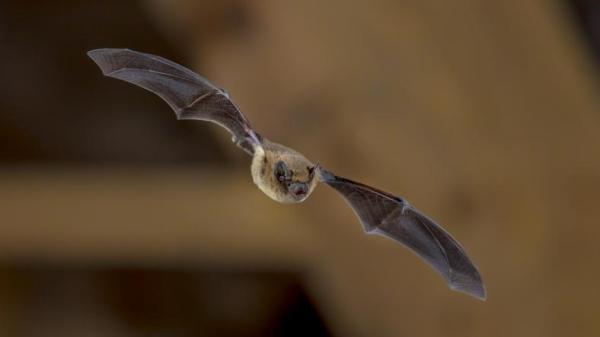
If you want to read similar articles to How Do Bats Fly if They Are Blind?, we recommend you visit our Facts about the animal kingdom category.

